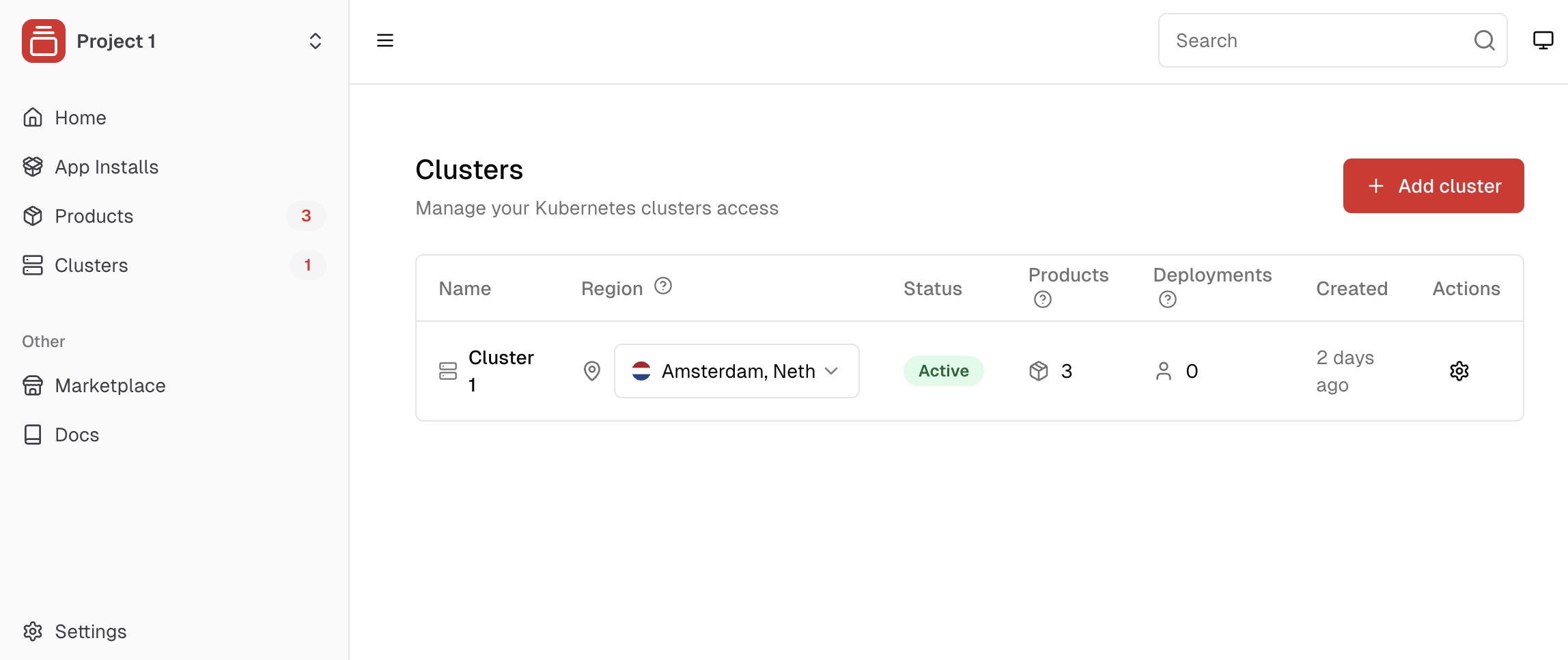
Getting Started with Clusters
Choose how you want to set up your infrastructure:Create a Managed Cluster
Set up fully managed infrastructure in minutes
Import Existing Cluster
Connect your existing Kubernetes infrastructure
Managed vs. Imported Clusters
Managed Clusters (Recommended)
Perfect for most users - CNAP handles all the complex operations:- Zero operational overhead - We manage the control plane
- 24/7 monitoring - Proactive issue detection and resolution
- Security updates - Automatic patches and Kubernetes upgrades
- Multi-cloud support - Use any provider or mix providers
Imported Clusters
For existing Kubernetes clusters - Bring any cluster from any provider:- Any Kubernetes cluster - EKS, GKE, AKS, self-managed, or others
- You manage the cluster - Control plane and worker operations remain your responsibility
- Limited CNAP management - We handle product deployments, you handle cluster operations
- Existing investment - Leverage current Kubernetes infrastructure
- Flexibility - Keep your current cluster management approach
Behind the Scenes
CNAP automatically handles product deployments when customers complete purchases. The platform synchronizes your product’s Helm chart resources with the destination cluster based on the customer’s selected region. Each product deployment gets its own dedicated namespace for security and isolation between different customer deployments. When deployments fail or customers cancel, CNAP automatically cleans up all associated resources to keep your infrastructure tidy.Resource strategy: Shared clusters work well when you control the
software, but consider dedicated machines or clusters for each customer if
they can run custom code like container images or game server plugins.